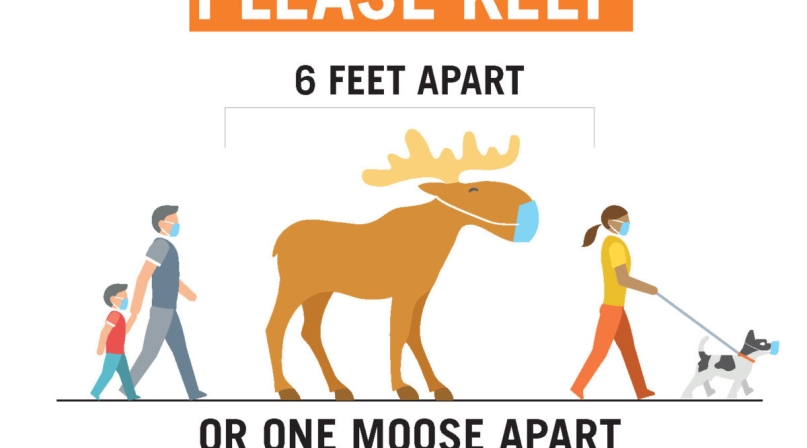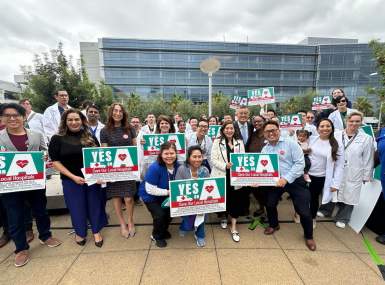Campaigns for COVID-19 safety protocols target young adults
Author
Upcoming Events
Related News

In Contra Costa County, Calif. an increase of positive COVID-19 cases among young adults has left the county trying to find new ways to spread the message about the importance of COVID-19 protocols.
The county launched the COVID-19 Youth Ambassadors Program to target young adults and educate young people about the virus.
“COVID-19 has left young people really scared and confused on what to believe,” Contra Costa Health Services Program Manager Rynn Schumacher said. “We established the program to not only help young people get educated about the facts regarding COVID-19, but it’s also meant to help young people educate their peers through social media.”
Learn More
For more information about Contra Costa County’s Youth Ambassadors Program, contact Rynn Schumacher.
Schumacher said this is the first initiative with virtual programming specifically targeting youth throughout the county.
Through the program, ambassadors between the ages of 15 to 24 will craft messages through focus groups, surveys and interviews to resonate with their peers and communities. Each ambassador will receive a stipend funded by the Contra Costa Regional Health foundation. The county received more than 600 applicants for the program.
“Our Contra Costa teens want to be part of the change,” Schumacher said. “They want to be part of whatever they can do to help stop this virus and get back to being normal.”
Ambassadors will post about wearing a mask and practicing social distancing in ways that relate to their own lives.
“It comes across really authentic because it’s their story, it’s how they’re doing their part to be able to prevent COVID-19,” Schumacher said.
He described the importance of utilizing social media platforms where young people have peer-to-peer conversations including on Tik Tok, Twitter and Instagram.
“When we do billboards and we do radio ads or TV, we can reach a lot of people,” he said. “But we inherently know that young people are on social media and so we have to change our tactics.”
He described how ambassadors will be educated on how to lead their followers back to the county’s website to learn more about COVID-19 from the public health department.
“Public health departments are perceived to be very authoritative. The message is going to come across like we’re parents,” Schumacher said. “What we wanted to do was make sure that we provide the tools for young people to feel empowered and make them be the ones to deliver messages.”
Schumacher advised other counties that want to target youth to form a steering committee combined with government and community leaders who work with young adults. He also advised counties to utilize data to back up their messages and create youth-centric and youth-friendly promotional material, starting with the application for the ambassadors program.
“The one thing that Contra Costa County is all about is health equity,” he said. “We don't try to do a cookie-cutter approach where one solution is going to solve all of the problems of every single community within the county.”
Barnstable County, Mass. is also targeting youth and created a Tik Tok account for the county as part of the #ShowUpWithAMask Campaign.
Communications Manager Sonja Sheasley said the county, which includes Cape Cod, saw a spike in positive COVID-19 cases because of house parties where young people weren’t wearing masks.
“We really wanted to target not only that age group, which is the younger drinking age, but also teenagers as well who are on the beaches not wearing masks,” she said.
The county utilized its Tik Tok page as part of the campaign and created videos to promote mask-wearing.
“I think it may be a fun way to get young people engaged and learn more about the role that our county plays locally,” Sheasley said.
She is encouraging youth to create their own videos that will be shared on the county’s Tik Tok page.
“Tik Tok is all about fun and being engaging in an entertaining way so I think that’s how you pull young people in,” she said. “I'm hoping that we can get some other youth to make videos that are more creative, and the end result is to get people to remember that we need to wear masks.”
Counties across the country have also turned to unique messaging to reach all county residents and even visitors to promote health measures that stop the spread of COVID-19.
In Cook County, Minn., Kjersti Vick, Marketing and Public Relations director for Visit Cook County, brainstormed the idea for the “One Moose Apart” campaign.
Cook County has one of the largest moose populations in the state, she said, inspiring the idea for the campaign to promote social distancing in a way that is friendly and informative.
The One Moose Apart logo, which features a moose wearing a mask, has donned T-shirts and kids’ face masks.
“Imagine a big, giant moose between you and the next person and it’s a big animal so a lot of people instantly think that’s a lot of space,” she said. “It’s fun to play on that so it provides a great welcoming message but it’s also very informative.”

Attachments
Related News

CMS issues new guidance on Medicaid Community Engagement Requirements
On December 8, the Centers for Medicare & Medicaid Services (CMS) released a Medicaid and CHIP Services Informational Bulletin (CIB) directing states on how to implement the Medicaid community engagement requirements enacted under Section 71119 of the One Big Beautiful Bill Act legislation (Public Law 119-21), or H.R. 1.

California county sales tax measure backfills federal healthcare cuts
Santa Clara County, Calif. will raise an estimated $330 million each year from a sales tax to backfill lose Medicaid funding.

